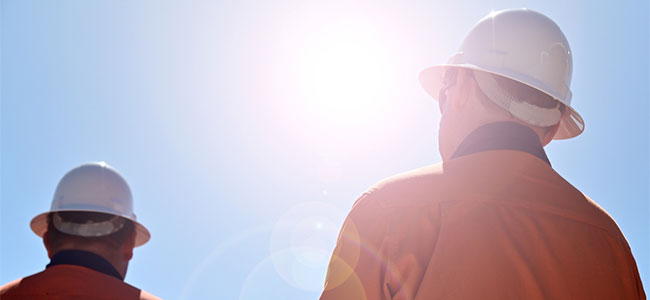
Sun Safety: 5 Tips Employers Should Know
July is Ultraviolet Safety Month and the perfect time to take precautions.
- By Robert Yaniz Jr.
- Jul 26, 2023
In the summertime, much of the focus is on the adverse effects extreme heat can have and how workers can protect themselves. Still, it’s important not to underestimate the blazing threat the sun itself can pose on the outdoor workforce. Since July is Ultraviolet Safety Month, let’s review a few basic points employers should know when protecting employees who work in the sun.
Understand the Dangers of Ultraviolet (UV) Rays
A workplace can be subject to extreme heat regardless of sun exposure. But employers should remember that invisible UV radiation is present on both bright, sunny days and ones filled with gray skies. According to the Environmental Protection Agency, UV radiation is actually comprised of three types of rays, which can lead to sunburn, dehydration and even skin cancer.
Know Which Roles Involve Lots of Sun Exposure
Before employers can protect their workers, they should assess which jobs require a lot of sun exposure. The National Institutes of Health argues that occupations with high exposure to UV rays include fishing, while agricultural and construction jobs and military service involve medium levels of sun exposure. Regardless, employers should know their workers’ level of UV risk.
Provide Sun Protection Measures to Workers
The Centers for Disease Control and Prevention advises employers to offer sun protection for their workers. Its suggestions include the use of tents, shelters and cooling stations at outdoor worksites. Even a step as simple as scheduling regular times for workers to take a break from the sun or apply additional sunscreen can go a long way toward boosting workplace safety.
Account for the Sun When Building Workflows
For outdoor workers, avoiding the sun altogether might be an impossibility. However, the National Institute for Occupational Safety and Health recommends that employers consider scheduling outdoor work for the time of day when sunlight is less prevalent. For the most part, sun exposure is at its strongest from late morning until roughly mid-afternoon.
Empower Employees with Sun Safety Training
Companies can also add a sun safety program to their employees’ required training. This is an effective way to provide workers with the knowledge and tools they need to recognize the signs of overexposure to UV rays and how to keep themselves safe. The National Cancer Institute’s Evidence-Based Cancer Control Programs recommends several sun safety programs.
About the Author
Robert Yaniz Jr. is the former Content Editor of Occupational Health & Safety.